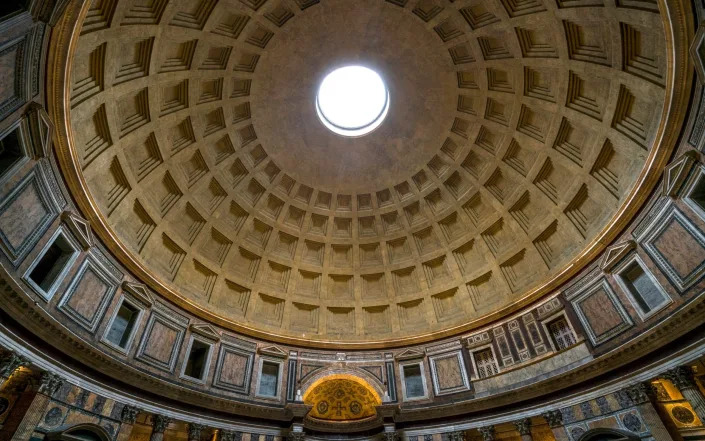Sarah Knapton
Fri, January 6, 2023

The Pantheon - Loop Images
The durability of Roman concrete, which has allowed structures such as the Pantheon in Rome to remain standing for nearly 2,000 years, has long baffled experts.
But scientists now believe they have rediscovered a secret ingredient in the ancient recipe that makes the building material self-healing – quicklime.
Experts at MIT and Harvard have found that adding quicklime to the mix creates a super-hot chemical reaction that leaves calcium deposits peppered throughout the concrete.
Crucially, if cracks begin to appear at a later stage and water seeps through, it causes these calcium deposits to recrystallise into calcium carbonate, filling in the gaps. The reactions take place spontaneously, healing the cracks before they spread further and compromise the integrity of a structure.
It explains how the world’s largest unreinforced concrete dome in the Pantheon, which was dedicated in 128AD, is still intact, while many modern concrete structures crumble after a few decades.
Some ancient concrete aqueducts still supply Rome with water, while large parts of Hadrian’s Wall, its core bolstered by ancient concrete, survive.
Pliny the Elder, writing in Naturalis Historia in 79AD, noted that concrete structures in harbours “become a single stone mass, impregnable to the waves, and every day stronger” despite being battered by seawater.

Hadrian’s Wall - Peter Mulligan/Getty Images Contributor
The new finding could enable modern engineers to build structures that can last millennia. It was made after experts started studying calcium deposits, known as lime clasts, in the ancient concrete. They had previously been disregarded as a product of sloppy mixing practices.
“The idea that the presence of these lime clasts was simply attributed to low quality control always bothered me,” said Admir Masic, a professor of civil and environmental engineering.
“If the Romans put so much effort into making an outstanding construction material, following all of the detailed recipes that had been optimised over the course of many centuries, why would they put so little effort into ensuring the production of a well-mixed final product? There has to be more to this story.”
To prove that the lime clasts were responsible for the durability, the team produced samples of hot-mixed concrete that incorporated both ancient and modern formulations, deliberately cracked them and then ran water through the cracks.
Within two weeks the cracks had completely healed and the water could no longer flow. An identical chunk of concrete made without quicklime never healed, and the water kept flowing through the sample.
The team is working to bring Roman concrete back as a commercial product.
“It’s exciting to think about how these more durable concrete formulations could expand not only the service life of these materials, but also how it could improve the durability of 3D-printed concrete formulations,” said Prof Masic.
The research was published in Science Advances.
No comments:
Post a Comment